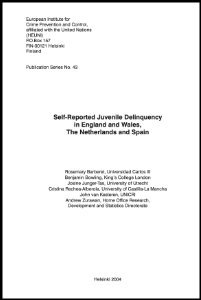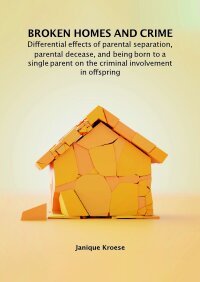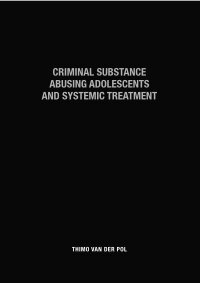By Rosemary Barberet, Benjamin Bowling, Josine Junger-Tas, Cristina Rechea-Alberola, John van Kesteren, Andrew Zuruwan.
In 1990 a group of mainly European criminologists embarked on a large comparative study of juvenile delinquency through the use of the self-report method. This methods consists of surveying youths in the general population and asking them directly – in private and in a non-stigmatising manner – about their possible involvement in antisocial and delinquent behaviour. For comparative criminological purposes, it can be seen as superior to other measurements of youth offending, largely because of the common definitions used. Although the self-report method has been used since the 1940s and is judged to be reliable and valid overall by the criminological scientific community, until 1990 no large scale comparative study had ever taken place. This report represents a more intensive analysis of the same data but for three selected European countries: England and Wales, The Netherlands and Spain. These countries represent different regions of Europe and also obtained the support of their respective Ministries of Justice in the funding of fieldwork with relatively large national samples. The authors of the report are the original participants in the self-report study, including its instigator, Josine Junger-Tas. This report received DG XX II funding in 1997-1999 under Action E.II of the ‘Youth for Europe’ programme, and represents a first step in the establishment of a European research agenda on youth offending and deviant behavior. Findings from the analyses reveal broadly similar patterns and correlates in juvenile offending in the three European countries examined, set against different reactions to the same on the part of legal institutions. Social control theory, the core theory used in the study, suggests that the social bonding of youth to prosocial others, commitments, activities and beliefs can be an important way of explaining and preventing youth offending. In a similar fashion, structuring the opportunities available to youth which facilitate offending can also reduce delinquent behavior and its harmful results. The report highlights a number of intriguing differences among the three countries which only substantiates the fact that in terms of juvenile justice policy, European countries have a great deal to learn from each other. The report is divided into ten chapters, each of which details a different aspect of the self-report questionnaire, which appears in the Appendix. The tenth chapter consists of conclusions and research and policy recommendations. An effort was made to use clear and simple language to enable the layperson to grasp the essence of the research, without sacrificing methodological rigour in the analyses, in the tradition of good applied criminological research. It is the hope of the authors that this report will lay the foundation to the establishment, on a European level, of research-based policies aimed at preventing and intervening in the area of juvenile offending.
Helsinki: European Institute for Crime Prevention and Control, 2004. 181p.





















